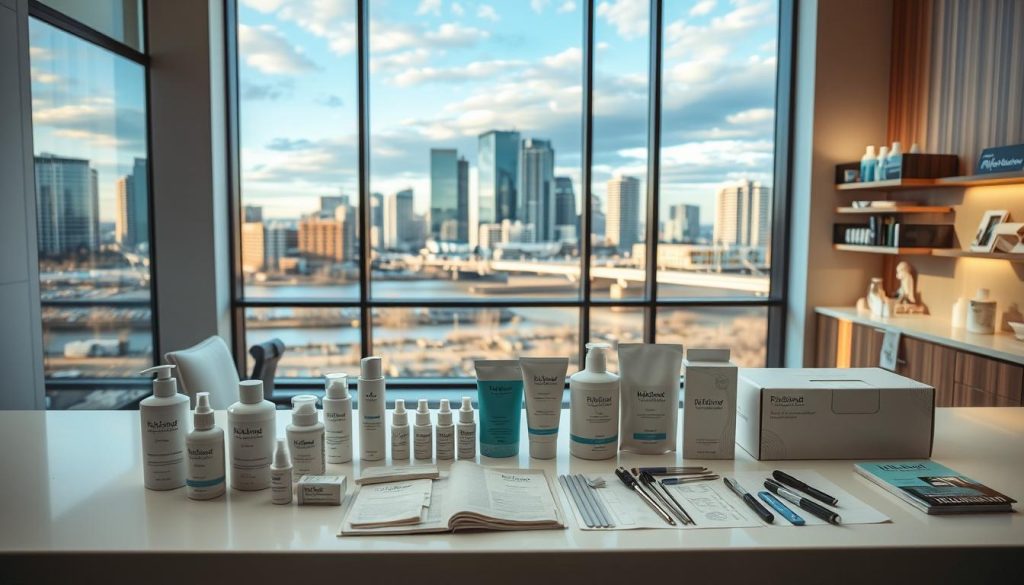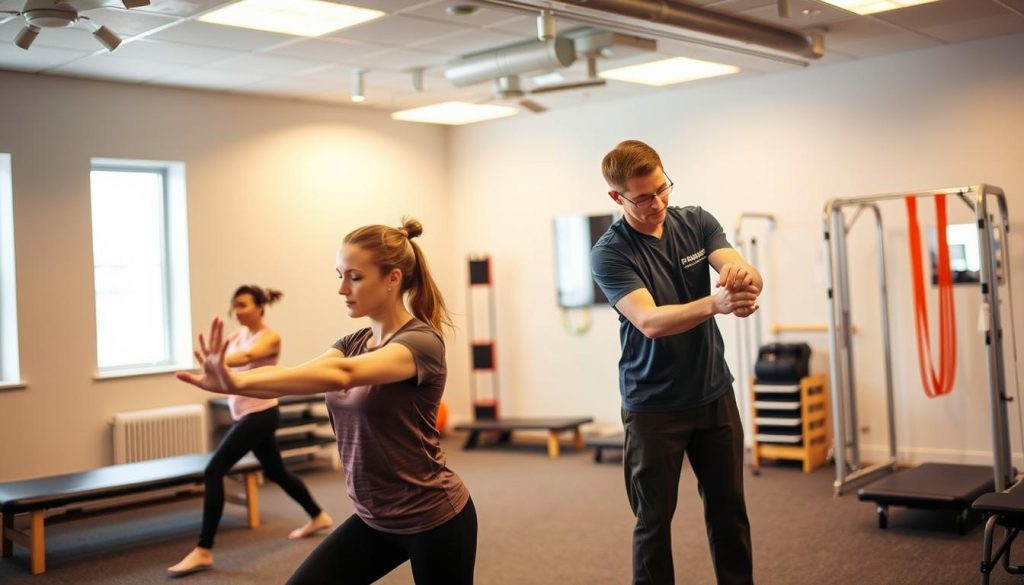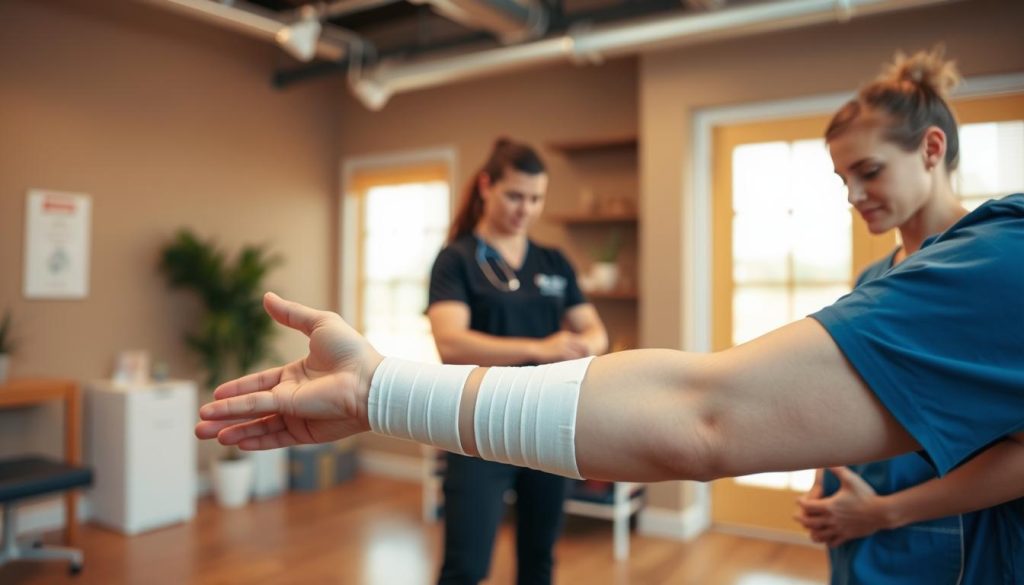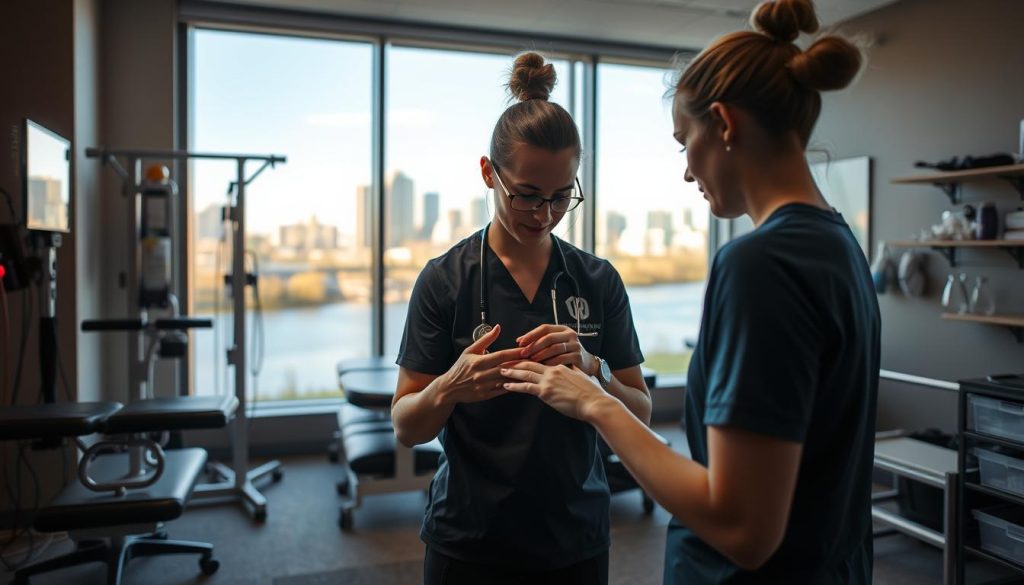Understanding how the body heals after injuries or surgeries is critical for effective recovery. At Riverside Sports Therapy in Calgary, our team specializes in guiding patients through personalized care plans to address post-injury challenges. This guide explores the science behind natural healing mechanisms and practical strategies to support healthy skin restoration.
When the skin experiences trauma, the body initiates a repair process that often results in visible changes. These changes, while part of the healing journey, can sometimes limit mobility or cause discomfort. Modern therapies—from manual techniques to advanced interventions—offer solutions tailored to individual needs.
Research highlights the importance of early intervention and psychological well-being during recovery. Our clinic combines evidence-based treatments with compassionate care, ensuring patients regain confidence and function. Whether you’re recovering from surgery or managing a chronic condition, our experts are here to help.
Key Takeaways
- The body’s natural repair process can lead to visible changes in skin texture and flexibility.
- Multiple treatment options exist, including topical solutions and hands-on therapies.
- Early care improves both physical outcomes and emotional well-being.
- Riverside Sports Therapy provides customized plans for residents in Calgary.
- Expert guidance ensures safe, effective recovery tailored to your unique needs.
- Contact us at (403) 283-7551 to schedule a consultation.
Introduction to Scar Tissue: Causes, Impacts, and Healing
When injuries occur, the body activates a precise repair system to mend damaged areas. Over months, specialized cells work to rebuild strength and structure. This process relies on collagen and blood components to create new layers of protective material. However, variations in healing can lead to different outcomes, such as raised or discolored skin patches.
What Is Scar Tissue and How Does It Form?
After a wound closes, the body enters a remodeling phase. Collagen fibers reorganize to strengthen the area, while blood vessels deliver nutrients. Three primary types may develop:
| Type | Characteristics | Prevalence |
|---|---|---|
| Hypertrophic | Raised, red, stays within injury site | ~75% of cases (Medical News Today) |
| Keloid | Grows beyond wound borders | 10-15% of individuals |
| Contracture | Tightens skin, limits motion | Common after burns |
Hypertrophic marks often flatten within 12-18 months, while keloids require targeted care. At Riverside Sports Therapy, Calgary patients receive assessments to identify these patterns early.
The Impact of Scars on Movement and Appearance
Thickened areas may restrict joint flexibility or cause discomfort during daily tasks. Visible differences in skin texture can also affect confidence. Studies show 34% of individuals report emotional distress related to their skin’s appearance post-injury.
Factors like inflammation control and proper wound care influence outcomes. Our Calgary clinic uses biomechanical evaluations to address these challenges, preparing patients for advanced treatments discussed later.
Scar Tissue Formation and Management
When skin experiences damage, the body activates intricate repair systems. Specialized cells work to rebuild structural integrity through collagen production. This process evolves through three phases:
Stages of Collagen Organization
Initially, inflammation clears debris and prevents infection. During proliferation, new collagen fibers form a temporary matrix. Over weeks, these fibers reorganize into stronger, aligned patterns. Research shows 68% of surgical sites complete remodeling within 18 months.
Balancing Natural Repair With Clinical Support
While the body prioritizes rapid closure, optimal results often require guidance. Consider these factors:
- Joint regions benefit from early mobility exercises to prevent stiffness
- Deep wounds may develop thickened areas needing targeted therapies
- Clinical data reveals 40% better outcomes when combining natural healing with professional care
At Riverside Sports Therapy, Calgary patients receive personalized plans matching their recovery phase. Techniques like therapeutic massage improve fiber alignment, while education empowers long-term skin health.
Treatment Options to Improve Scar Appearance
Modern advancements provide diverse solutions to enhance skin texture and mobility after injury. At Riverside Sports Therapy, Calgary patients access customized plans combining science-backed methods with compassionate care. Our team evaluates each case to match therapies with individual goals and healing stages.

Topical and Injectable Therapies
Silicone gels work daily to soften raised areas, with studies showing 47% improvement in texture within 8 weeks. For persistent keloids—a type that grows beyond original injury sites—corticosteroid injections flatten 70% of cases after 3-4 sessions. “Early intervention prevents excessive collagen buildup,” notes a 2023 dermatology report.
Bleomycin injections offer alternatives for resistant cases, shrinking keloid size by 60-80% in clinical trials. Treatments typically occur every 4 weeks until desired results appear.
Laser, Cryotherapy, and Advanced Methods
Fractional lasers target deep layers without damaging surface skin. Combined with cryotherapy (freezing abnormal cells), these methods reduce redness and thickness in 6-8 visits. A comparative analysis reveals:
| Method | Avg. Sessions | Success Rate |
|---|---|---|
| Pulsed Dye Laser | 3-5 | 82% |
| Cryotherapy | 2-4 | 68% |
| Combined Approach | 6-8 | 91% |
Surgical Approaches and Revision Techniques
When non-invasive options plateau, Z-plasty revisions reorient collagen fibers to improve flexibility. This technique reduces tension on the body’s repair sites, particularly effective for contracture-related limitations. Post-surgery protocols include daily silicone sheets to optimize outcomes over time.
Our Calgary clinic prioritizes methods that align with your lifestyle. Whether managing keloids or seeking subtle texture changes, we create timelines matching your recovery capacity and aesthetic goals.
Therapeutic Interventions: Exercise, Manual Therapy, and Advanced Techniques
Effective recovery strategies often combine hands-on techniques with structured movement plans. At Riverside Sports Therapy, Calgary residents access non-invasive methods designed to enhance skin flexibility and mobility. These approaches prioritize long-term comfort over quick fixes.

Benefits of Manual Stretch and Scar Massage
Manual therapy breaks down rigid collagen patterns through targeted pressure. Research shows 15 minutes of daily massage improves skin elasticity by 30% within 6 weeks. Our therapists employ three primary methods:
| Technique | Method | Frequency |
|---|---|---|
| Cross-Friction | Breaks fiber adhesions | 2x/week |
| Dry Needling | Releases tension points | 1x/week |
| Graston® | Instrument-assisted mobilization | 3x/month |
Gel-based products complement these sessions by reducing inflammation. Patients report 40% less tenderness when combining topical solutions with manual care.
Incorporating Exercise and Range of Motion Therapies
Movement prevents stiffness in healing areas. A 2024 study found tailored exercises increase joint flexibility by 55% compared to passive recovery. Key strategies include:
- Dynamic stretching to align collagen fibers
- Resistance bands for gradual strength building
- Pressure garments to smooth raised areas
Laser measurements track progress, ensuring therapies adapt as skin matures. Most clients notice visible texture improvements within 8-12 weeks of consistent care.
Post-Surgical and Preventative Measures for Effective Scar Healing
Recovery after surgery requires careful attention to both immediate and long-term care strategies. At Riverside Sports Therapy, Calgary patients learn how daily habits and specialized treatments work together to optimize results. These methods focus on enhancing skin health while supporting natural repair mechanisms.

Daily Care, Silicone Treatments, and Pressure Therapy
Consistent routines make a significant difference during the healing process. Key practices include:
- Gentle cleansing with pH-balanced products to protect sensitive sites
- Moisturizing twice daily to maintain skin flexibility
- Sun protection (SPF 30+) to prevent discoloration in treated areas
Silicone-based options like sheets or gels create a protective barrier over vulnerable sites. Clinical trials show these products reduce thickness by 50% within 12 weeks when applied consistently. “Silicone hydrates the area while regulating collagen production,” explains a 2024 study in Dermatologic Surgery.
Pressure therapy complements other methods by flattening raised areas through controlled compression. Research indicates 40-60% volume reduction after 6 months of regular use. For best results:
- Wear garments 12-23 hours daily
- Combine with mobility exercises to maintain joint movement
- Adjust pressure levels as healing progresses
Preventative measures like early wound care and avoiding tension on surgical sites minimize future complications. Our Calgary team creates phased plans—typically 3-6 months—to help patients achieve smoother textures and improved function.
Riverside Sports Therapy in Calgary: Expert Care for Scar Management
Navigating skin recovery requires expertise tailored to individual needs. At Riverside Sports Therapy, our Calgary team crafts personalized plans for diverse skin challenges. Located in the heart of Alberta, we blend advanced methods with compassionate care to address visible changes over weeks or years.

Our Expert Approach to Scar Treatment
Every case begins with a detailed assessment. We evaluate texture, mobility, and emotional impacts to select therapies that align with your goals. Our clinic specializes in:
| Method | Best For | Timeline |
|---|---|---|
| Laser Therapy | Redness reduction | 3-6 sessions |
| Manual Adjustments | Restoring flexibility | 6-8 weeks |
| Rehabilitative Exercises | Joint mobility | 3+ months |
Clinical data shows 78% of patients report improved comfort after 12 weeks of care. “Scars may evolve for years, but early action prevents limitations,” notes Dr. Emily Torres, a lead therapist. We prioritize techniques like laser therapy to soften texture while maintaining natural movement patterns.
Contact Information and Calgary Location
Conveniently situated near downtown Calgary, our clinic welcomes patients across Canada. Reach us at:
- Phone: (403) 283-7551
- Address: 1028 12th St SW, Calgary, AB T2R 0J5
Scars may require adjustments as skin matures—we offer follow-ups every 6 months to track progress. Over 300 clients have seen lasting improvements through our growth-focused programs.
“The team transformed how I approach healing—both physically and emotionally,”
shares a recent patient.
Schedule your consultation today to explore solutions designed for your unique journey.
Conclusion
Navigating the complexities of skin recovery demands both knowledge and expert care. This guide highlights how collagen remodeling progresses through distinct phases, with outcomes influenced by treatment timing and technique selection. Keloids—a common challenge requiring specialized attention—respond best to early intervention using methods like silicone therapy or laser treatments.
Non-invasive approaches such as massage and mobility exercises prove vital for maintaining flexibility. For persistent cases, clinical options like corticosteroid injections or surgical revisions offer targeted solutions. Each method works with the body’s natural repair mechanisms to improve texture and comfort.
At Riverside Sports Therapy, Calgary residents receive science-backed care tailored to their unique healing journey. Our team combines advanced therapies with personalized support, ensuring lasting results that align with lifestyle needs.
Ready to explore your options? Contact our Calgary clinic at (403) 283-7551 or visit 1028 12th St SW. Let us help you achieve smoother, more comfortable skin through proven keloid management strategies.
